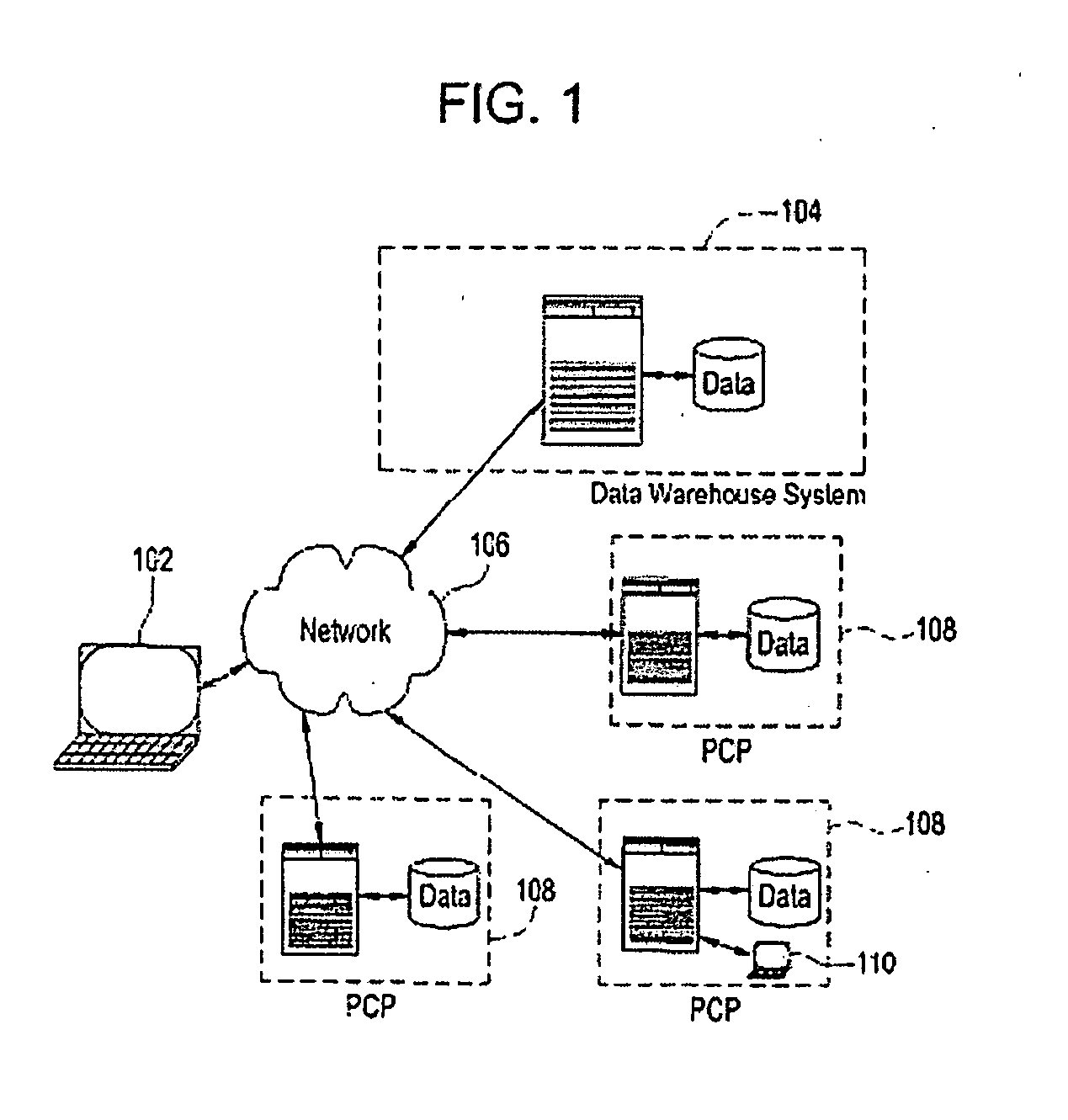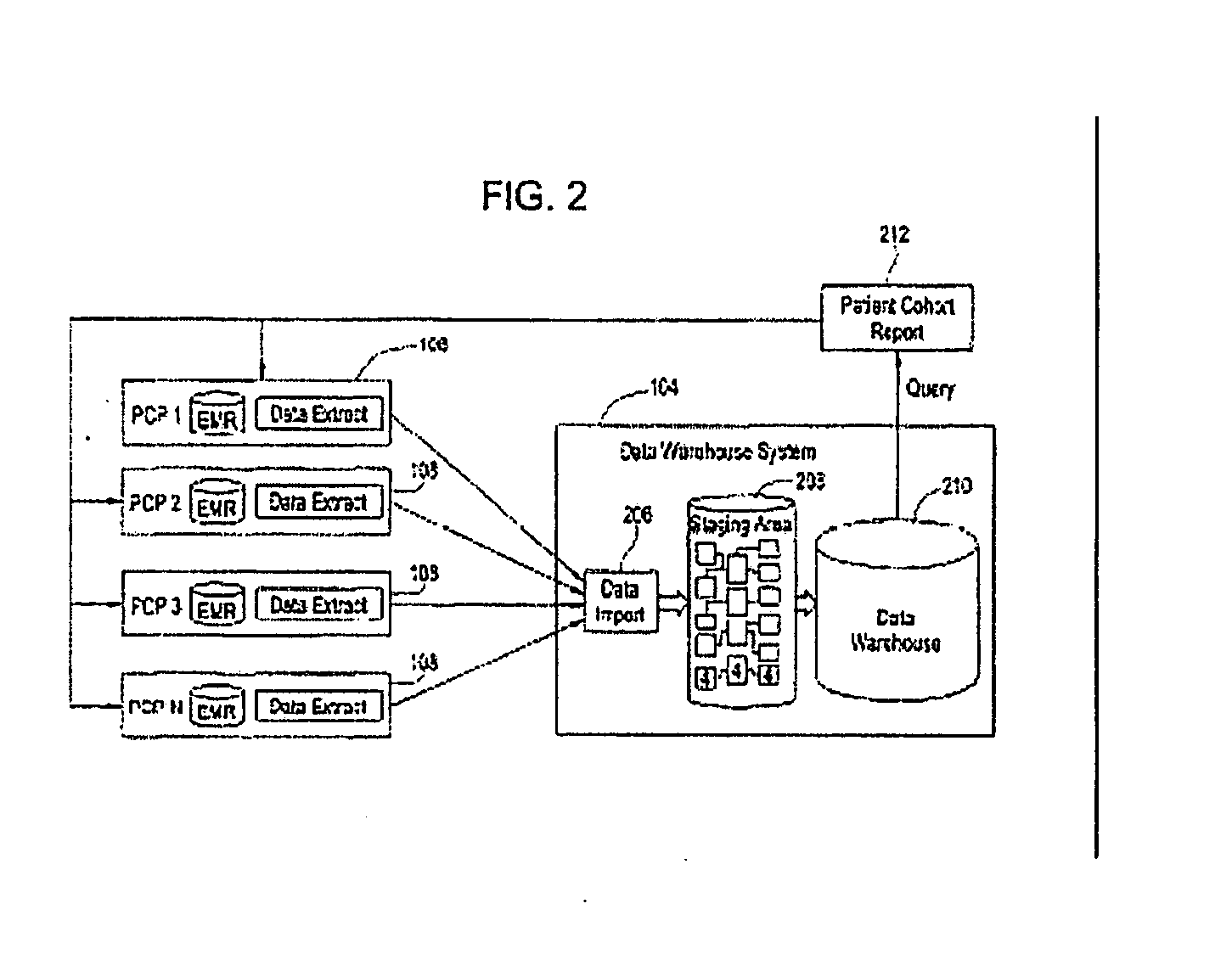Systems and methods for patient re-identification
a patient identity and system technology, applied in the field of patient identity security, can solve the problems of inconvenient patient care providers, inability to group and analyze all medical reports relating to a particular patient, and insufficient use of de-identified data
- Summary
- Abstract
- Description
- Claims
- Application Information
AI Technical Summary
Problems solved by technology
Method used
Image
Examples
Embodiment Construction
[0021] An exemplary embodiment of the present invention is a secure process for sending de-identified patient information from an ambulatory patient care provider (PCP) site to a data warehouse system where the patient data may be analyzed and compared with a wider range of patient data. The terms “de-identified patient information” and “de-identified patient data” as used in this document refer to both fully de-identified data as defined by HIPAA and limited data set data as defined by HIPAA. A limited data set is protected health information for research, public health and health care operations that excludes direct identifiers (e.g., name; postal address other than city, state and zip code; social security number; medical records numbers) but in which other identifying information may remain (e.g., dates of examination; documentation; diagnosis; prescription; lab test results). This is contrasted with fully de-identified data as defined by HIPAA, where all data that may be used t...
PUM
 Login to View More
Login to View More Abstract
Description
Claims
Application Information
 Login to View More
Login to View More - R&D
- Intellectual Property
- Life Sciences
- Materials
- Tech Scout
- Unparalleled Data Quality
- Higher Quality Content
- 60% Fewer Hallucinations
Browse by: Latest US Patents, China's latest patents, Technical Efficacy Thesaurus, Application Domain, Technology Topic, Popular Technical Reports.
© 2025 PatSnap. All rights reserved.Legal|Privacy policy|Modern Slavery Act Transparency Statement|Sitemap|About US| Contact US: help@patsnap.com



